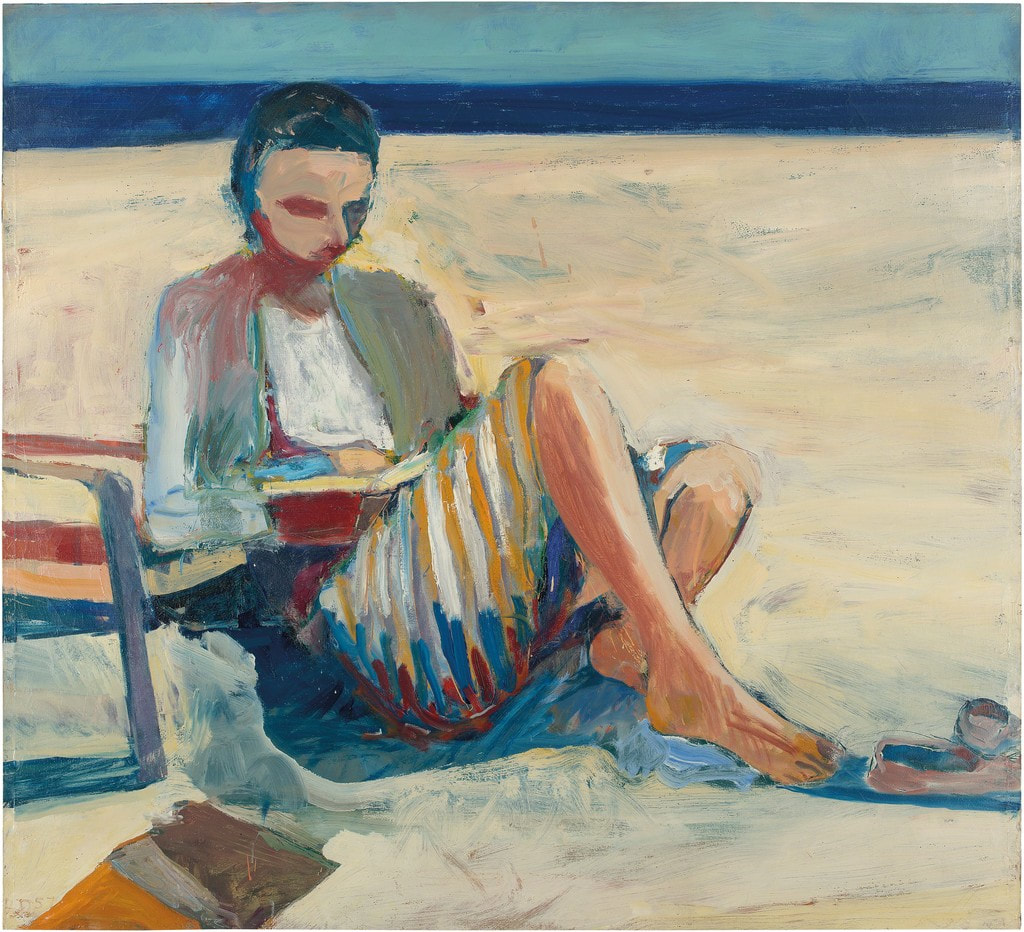|
Girl on the Beach, 1957
You can’t judge sugar by looking at the cane — Willie Dixon When the canvas was white before its “pristine surface was besmirched,” the artist must have imagined he lived in an occupied country run by a puppet government. Centuries after Vermeer took a boat ride from Delft to Leyden, picturing not a secular madonna but the narrative possibilities in a woman crying by the river, Diebenkorn painted a figure into the layered impasto of sand—transformed it into Girl on the Beach. I wonder that she’s so far from the centre. I’d guess she’s half a mile from the almost black Pacific, thin ribbon below broader ribboned blue-cracked sky. Strangely, I’ve always been attracted by the centre. Something about its vocabulary, how it offers a canopy to the surrounding architecture. The girl, who simultaneously appears both defiant and buoyant, reminds me of mating elephant seals drawing blood in Drake’s Bay or the wary Tule elk of Tomales Point. Thick strokes conjure orchid petals. One or more of her parents must be multi-floral. The painting’s odour is tropical, the smell of an epiphyte after blooming. It’s more than fifty years and she’s reading the same hardcover book. Twenty years from now I fear I’ll still be trying to describe her. Is she flat like drizzle falling on the beach is flat or is there depth to her like the beach has depth? Is it raining? She hasn’t ears, they’re hidden by pasted down hair (from the rain?) For weeks a castoff sofa has lain on Industrial Drive’s blind corner by the sheet metal works. I saw a couple standing behind it, embracing. I’m sure the woman was weeping even though I couldn’t see her face. There were tremors of reconciliation like the convulsions of a sobbing child finally done crying, gasping for air. With Girl on the Beach, I’m looking straight at her and can’t tell if she’s white, black, dead, alive. It’s the oval face of a mannequin, of a harlequin, the face of the American brushing her teeth in the horror film when her cheeks flake off in her hands. She has her own weather. Smudge of burnt ochre is her neck. She hasn’t a mouth. Not one gull flaps through her space. I can’t discern what she’s wearing—striped skirt or is it a towel across her legs? Or is a towel draped about her arms? Covering her chest could be a white blouse beneath a grayish top. Her left leg, bent, a mass of pigment looking like a drumstick torn from the slaughtered bird. Her right leg: shapely, supple, finely contoured. But nothing else has definition. There’s a beach chair but she’s sitting on the sand, maybe on a blanket or a sheet, one sandal visible beyond her feet, crooked elbow of right arm resting on the chair. Her centrality is off. Her eyes lack pupils. Light without sun. Sun without heat. She’s neither inside nor out. Though here she is, coming at you, sitting there reading, Girl on the Beach. Howard Faerstein Howard Faerstein’s full-length book of poetry, Dreaming of the Rain in Brooklyn, was published in 2013 by Press 53. A second book, Googootz and Other Poems is forthcoming from Press 53. His work can be found in numerous journals including Great River Review, Nimrod, CutThroat, Off the Coast, Rattle, upstreet, Mudfish and on-line in Gris-Gris, and Connotation. He is Associate Poetry Editor of CutThroat,A Journal of the Arts, and lives in Florence, Massachusetts.
0 Comments
Your comment will be posted after it is approved.
Leave a Reply. |
The Ekphrastic Review
COOKIES/PRIVACY
This site uses cookies to deliver your best navigation experience this time and next. Continuing here means you consent to cookies. Thank you. Join us on Facebook:
July 2024
|




